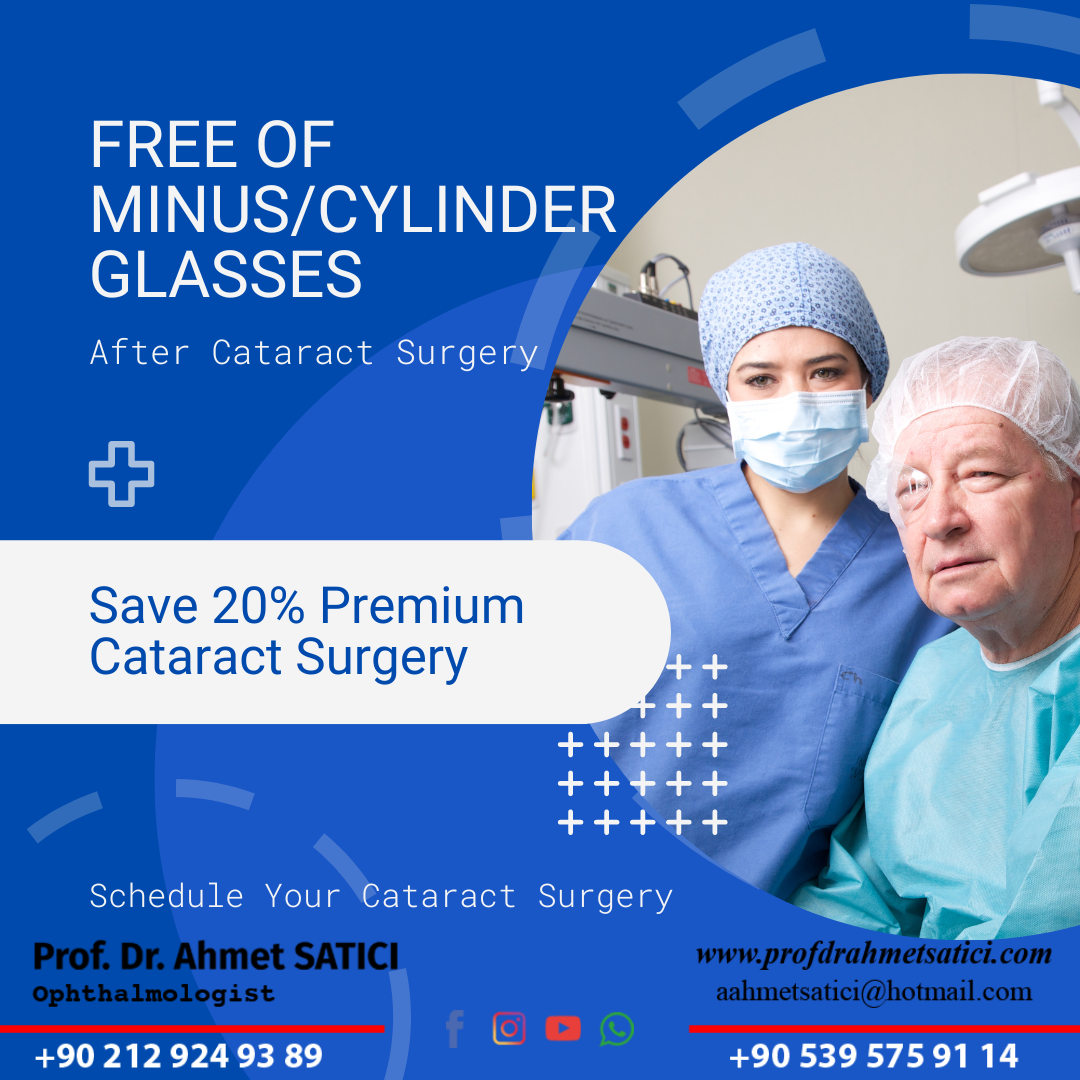To get an appointment and information about Smart Lens, contact us 24/7:
You can reach us at +90 (539) 575 91 14.
TRIFOCAL LENS (SMART LENS)
Trifocal (Trifocal) Lenses, popularly known as Smart Lenses, can eliminate the need for glasses at far, middle and close distances. Patients with Trifocal (Trifocal) Smart Lens can use a phone or do handwork at close range without glasses after cataract surgery; can use a computer without glasses at medium distance, cook a meal or see the speedometer while driving; They can watch television without glasses, drive a car, or see texts from afar without glasses.
In the past, in the treatment of cataract patients, the natural lens was removed and one of the monofocal lenses designed to see far was used. In this case, it became obligatory for the patients to wear glasses after the treatment. Today, multifocal intraocular lenses have started to replace single focal lenses; because these lenses allow to correct visual disturbances from all angles, making vision as natural as possible.
Multifocal lenses are designed in two different ways, bifocal or trifocal. Trifocal lenses, popularly known as Smart Lenses, are the name given to trifocal lenses. When smart lenses are used in the eye treatment of the patients, there is no need to use glasses after the treatment. These people can read books or see distant texts without glasses. Trifocal lenses are the most advanced intraocular lens technology today. It positively affects the quality of life as it provides an uninterrupted and clear view for close, medium and long distances.

Smart Lens Usage Areas
Smart lenses are used when the natural lens in the eye loses its clarity for various reasons or cannot function functionally. The most important area of use is cataract disease. Cataract treatment is based on the principle of removing the lens of the eye that has lost its clarity and replacing it with an artificial lens.
Working Principle of Smart Lenses
Smart lenses work by refracting light entering the eye from close, intermediate and far distances and focusing it on a single focal point on the retina. This enables simultaneous focusing on near, intermediate and far objects with a single lens. These modern and smart lens types can reduce or eliminate the need for glasses or contact lenses. Just like prescription eyeglasses, trifocal lenses will be adjusted to your individual needs to give you the best possible vision.

Considerations in Choosing Trifocal Lenses
Like all innovative technologies, there are some considerations when choosing a trifocal lens. If you suffer from eye diseases such as glaucoma, diabetic retinopathy, diabetic macular edema, or macular degeneration, you may not be a suitable candidate for bifocal or trifocal lenses. These diseases may be incompatible with intraocular lens therapy even in the early stages. If you suffer from any of these diseases, you can discuss alternative eye treatment options with your eye doctor.
Side Effects of Smart Lens Use
THE PHONE OF LIGHT
A side effect associated with multifocal intraocular lenses is the greater degree of visual disturbances caused by the lens focusing light from more than one distance, and light phenomena called dysphotopsia. These can be in the form of glare in some low-light conditions or halos around light sources at night. Most people with multifocal lenses find this so-called light phenomenon only mildly bothersome and get used to it over time. However, there is also a small group of patients who do not adapt well to smart intraocular lenses or are very bothered by the side effects that may occur.
REDUCED CONTRAST SENSITIVITY
Another consequence of multifocality is a reduction in image quality. This is because light from different distances separates as it focuses on the retina. Therefore, some compromise in image quality is made to maintain the multifocal effect.
Smart lens surgery, which requires an experienced surgeon and good equipment, is performed in our hospitals.
To get an appointment and information about Smart Lens, contact us 24/7:
You can reach us at +90 (539) 575 91 14.
* The content of the page is for informational purposes only, please consult your doctor for diagnosis and treatment.